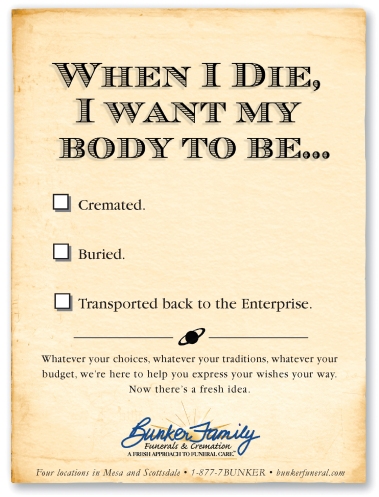 You may not have realized it, but if you’re in the death care profession, there has never been a better time to be out front with your marketing. Not marketing in a mercenary way, not in the way you’ve been speaking to your audience before, but out front, nonetheless.
You may not have realized it, but if you’re in the death care profession, there has never been a better time to be out front with your marketing. Not marketing in a mercenary way, not in the way you’ve been speaking to your audience before, but out front, nonetheless.
At times of crisis, people look to the Caregivers for comfort. They can be leaders within their faith circle, but also first responders, medical professionals, anyone whose lives are dedicated to the care and support of others. Doesn’t that include you? Hasn’t that always been the reason you choose this profession? At the very heart of it, you’re in business of compassionate caregiving. And you have an incredibly vital role to play right now.
Which is why your messaging needs to address what’s important to your audience during this time of uncertainty and upset. (It’s absolutely not about how many seats in your tribute center nor the wide range of urns and caskets, or your new cremation garden.)
 Greenlawn Funeral Homes & Cemeteries in Bakersfield, CA has posted a number of sensitive videos talking about their policy changes and new programs such as “Hugs from Home” in order to balance between being of service and the limitations place on their operations by state and local ordinances.
Greenlawn Funeral Homes & Cemeteries in Bakersfield, CA has posted a number of sensitive videos talking about their policy changes and new programs such as “Hugs from Home” in order to balance between being of service and the limitations place on their operations by state and local ordinances.
 Forest Lawn in Los Angeles beautifully illustrates messaging done right in the age of COVID-19, demonstrating empathy and comfort through their beautiful and sensitive Facebook posts, linking in many cases to their blog posts to expand on their messages.
Forest Lawn in Los Angeles beautifully illustrates messaging done right in the age of COVID-19, demonstrating empathy and comfort through their beautiful and sensitive Facebook posts, linking in many cases to their blog posts to expand on their messages.
In the era of social distancing, social media is certainly one of the most significant opportunities you have to share your perspectives frequently and measurably. But that doesn’t mean you should ignore any other marketing media that gives you a voice.
A GlobalWebIndex (GWI) survey reveals that Americans are not only spending more time watching news coverage (43%), but also spending more time watching shows and films on streaming services such as Netflix and Hulu (42%) as well as TV on broadcast channels (42%). Source: GWI.
And not just TV, consumers also say they have listened to more local public radio (29%) as well as read local/regional newspapers (29%). Source: Horowitz Research. To ignore these numbers is to miss fishing where the fish are!
The Message Above All Else
Right now, research is showing that consumers are paying greater attention to any messaging that shows an advertisers’ earnest attempts at putting their customers’ needs ahead of their own – that says that business today isn’t as usual. We used to call this “feel good” advertising, but that’s precisely what’s called for now.’
Whether through programs that help families connect with each other from a distance, products or services that are re-priced to help newly unemployed customers, or simply being personally available to answer calls 24/7, it’s no longer about just talking about values, it’s about demonstrating them — showing how you are helping in an unprecedent time of shared crisis.
Show how you are taking this situation seriously by acknowledging the social, financial and other realities of this pandemic, empathizing with people’s concerns, and offering meaningful solutions within your capacity.
Talk about how you are adapting your business for the benefit of your customers as well as your employees, while contributing to the greater good of society. (What goes around comes back around, and long-term, you will find the rewards will well outweigh the costs, efforts and sacrifices you make today.)
Above all else, whether communicating how you are serving customers in new ways, implementing new procedures to protect their well-being, or making an effort to help the broader situation, now is not the time to be silent.
You need to be a calming voice in the storm. This is your moment.
####
Dan Katz is president, creative director of LA ads. To discuss your thoughts with Dan on this blog or any marketing matters, email via this link, or visit www.LAadsMarketing.com. You can also connect with Dan on LinkedIn. See agency work via this link.

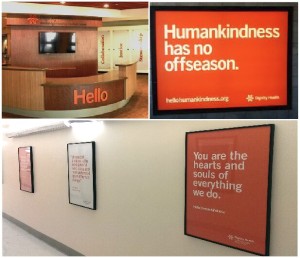

 For those who couldn’t attend the 2019 NFDA Convention in Chicago, I want to let you know that it was a first-rate event with a trade floor full of exhibitors and one wonderful seminar after another. But the highlight for many was attending the general session and hearing the keynote speaker and best-selling author, teacher and entrepreneur, Seth Godin, entertain the audience with his presentation on the importance of “story telling” to engage audiences and ultimately earn their trust.
For those who couldn’t attend the 2019 NFDA Convention in Chicago, I want to let you know that it was a first-rate event with a trade floor full of exhibitors and one wonderful seminar after another. But the highlight for many was attending the general session and hearing the keynote speaker and best-selling author, teacher and entrepreneur, Seth Godin, entertain the audience with his presentation on the importance of “story telling” to engage audiences and ultimately earn their trust.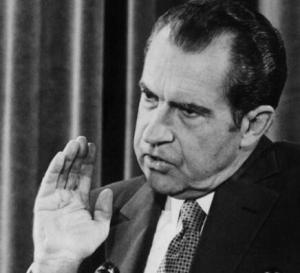 Former president Richard Nixon was famously quoted (and oft imitated) for his phrase “Let me make one thing perfectly clear…” Not that transparency was actually part of his administration, but at least he knew the public wants things to be clear.
Former president Richard Nixon was famously quoted (and oft imitated) for his phrase “Let me make one thing perfectly clear…” Not that transparency was actually part of his administration, but at least he knew the public wants things to be clear.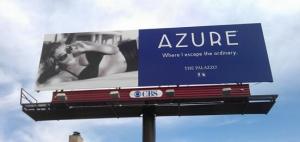
 I love acronyms – a seemingly meaningless salad of initials that really do stand for something meaningful. If you use text messaging, OMG, you might LOL at something your BFF just IM’ed you.
I love acronyms – a seemingly meaningless salad of initials that really do stand for something meaningful. If you use text messaging, OMG, you might LOL at something your BFF just IM’ed you.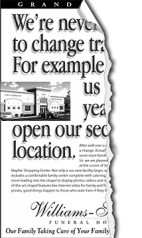
 Brown Funeral Home is running an ad that says “Our Family Caring About Yours.” Down the street, White Funeral Home has a commercial that says “When Compassion Counts.” The neighborhood budget competitor, Gray Affordable Funeral Care, is airing a series of radio spots that say “All the Care but not the Cost.” Oh, and just across town, Green Memorial Gardens, the combo cemetery-funeral home-crematory is advertising “Delivering Dignity 24-7.”
Brown Funeral Home is running an ad that says “Our Family Caring About Yours.” Down the street, White Funeral Home has a commercial that says “When Compassion Counts.” The neighborhood budget competitor, Gray Affordable Funeral Care, is airing a series of radio spots that say “All the Care but not the Cost.” Oh, and just across town, Green Memorial Gardens, the combo cemetery-funeral home-crematory is advertising “Delivering Dignity 24-7.”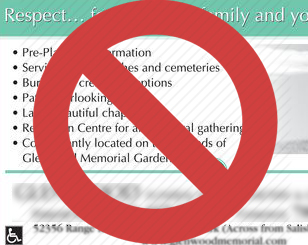 I’m a fan of great quotes. One of my favorites is
I’m a fan of great quotes. One of my favorites is